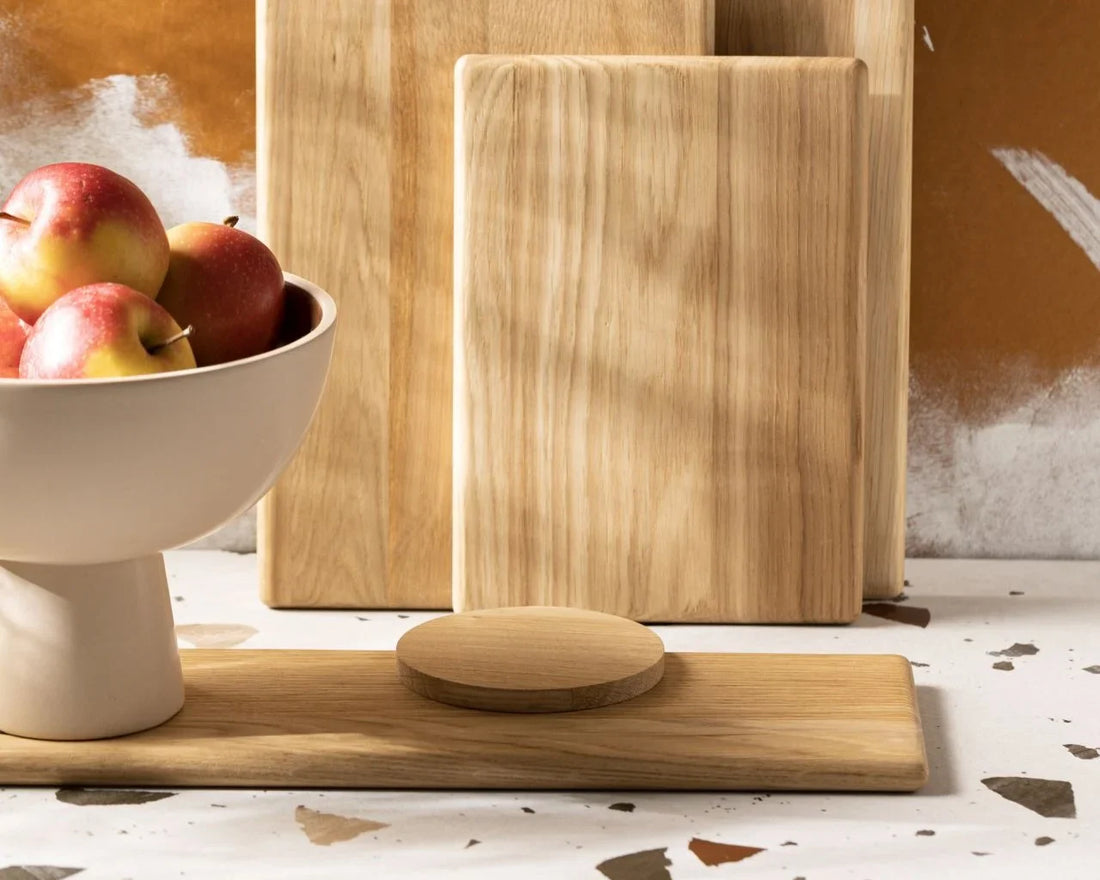Your cutting board isn’t just a kitchen tool—it’s a daily decision impacting your health, your knives, and the planet. While plastic boards dominate supermarkets, science reveals why wood is the wiser choice. Below, we compare hygiene, durability, and eco-impact to help you make an informed, toxin-free choice.
1. Hygiene & Safety: Wood’s Natural Defense vs Plastic’s Hidden Risks
Plastic Cutting Boards:
-
Bacterial Breeding Grounds: Deep knife grooves trap Salmonella and E. coli—even after washing (American Chemical Society).
-
Microplastic Contamination: Chopping releases plastic particles into food, linked to hormone disruption and inflammation.
-
Chemical Leaching: Low-quality plastics may shed phthalates, especially when heated.
Wooden Cutting Boards:
-
Self-Sanitizing: Studies show bacteria die faster on wood due to its porous structure drawing microbes into desiccation (Rachael’s Good Eats).
-
No Microplastics: A natural surface ensures zero synthetic residue in meals.
-
Antimicrobial Oils: Woods like walnut and maple contain natural compounds that inhibit bacterial growth.
Winner: Wood.
2. Durability: Decades vs Disposable
Plastic Boards:
-
Warp & Crack: Heat and knives degrade plastic quickly, requiring yearly replacements.
-
Stains & Odors: Tomato, turmeric, and garlic leave permanent marks.
Wooden Boards:
-
Lifelong Investment: High-quality maple, cherry, or walnut boards last decades with proper care.
-
Self-Healing Grain: Minor scratches close naturally over time.
Pro Tip: Season wood monthly with food-grade mineral oil to prevent drying.
3. Knife Care: Protect Your Blades
Plastic Boards:
-
Dull Blades Fast: Hard surfaces accelerate knife edge wear.
Wooden Boards:
-
Gentle on Knives: Wood’s slight "give" preserves sharpness, reducing resharpening (Bon Appétit).
Winner: Wood.
4. Environmental Impact: Renewable vs Landfill
Plastic Boards:
-
Fossil Fuel Product: Derived from petroleum, contributing to CO2 emissions.
-
Non-Recyclable: Most end up in landfills or oceans, breaking into microplastics.
Wooden Boards:
-
Carbon-Neutral: Responsibly sourced wood (FSC-certified) supports forest regeneration.
-
Biodegradable: At end-of-life, wood decomposes naturally.
Veles Realm Pick: Reclaimed Walnut Cutting Board – Crafted from upcycled timber.
5. Best Woods for Cutting Boards
-
Maple: Tight grain resists bacteria; ideal for heavy chopping.
-
Walnut: Natural oils repel moisture; gentle on knives.
-
Cherry: Dense yet forgiving; develops a rich patina over time.
-
Avoid Teak: High silica content dulls blades (Serious Eats).
6. How to Care for Wooden Boards
-
Clean: Handwash with mild soap; never soak or dishwasher.
-
Sanitize: Scrub with lemon juice and coarse salt.
-
Oil Monthly: Use food-grade mineral oil to prevent cracks.
Plastic Board Care: Replace every 1–2 years; disinfect with bleach (but microgrooves still harbor bacteria).
Conclusion: Why Wood Wins
Plastic boards are a short-term convenience with long-term costs to health and the planet. Wooden cutting boards, however, offer unmatched safety, durability, and sustainability. By choosing wood, you invest in a toxin-free kitchen and a greener future.

